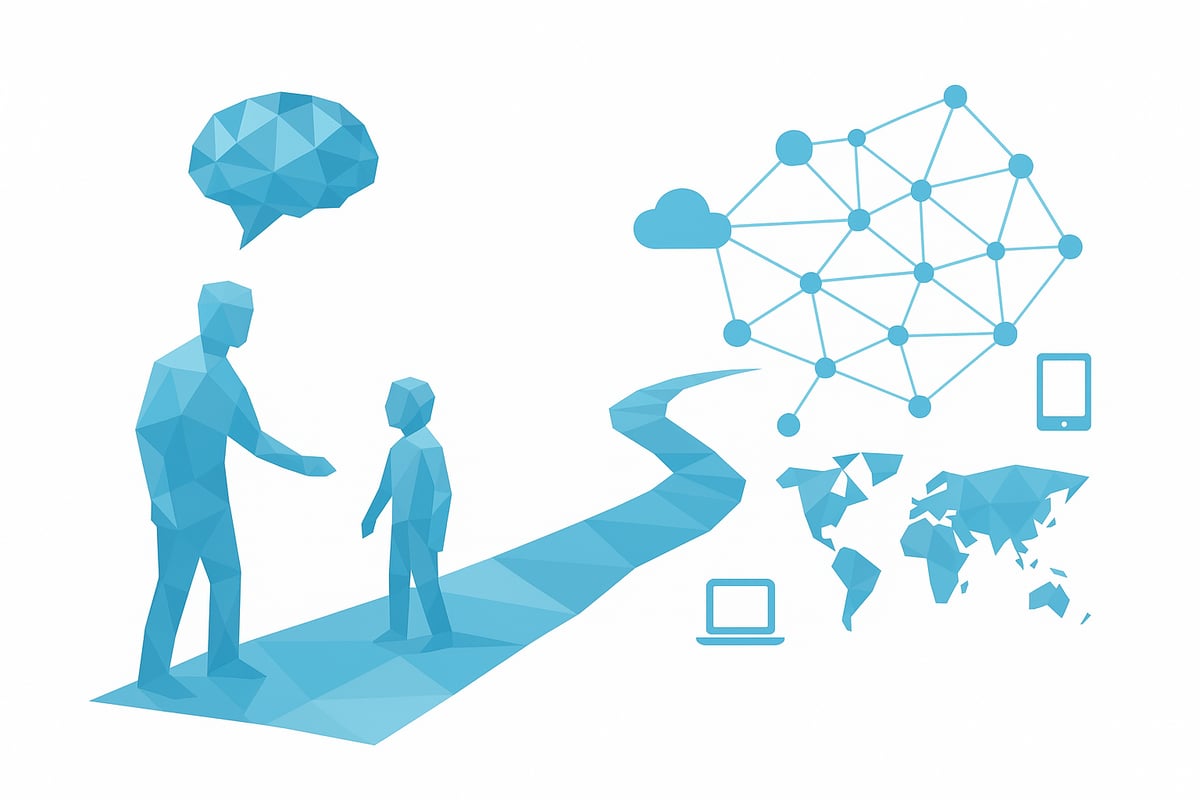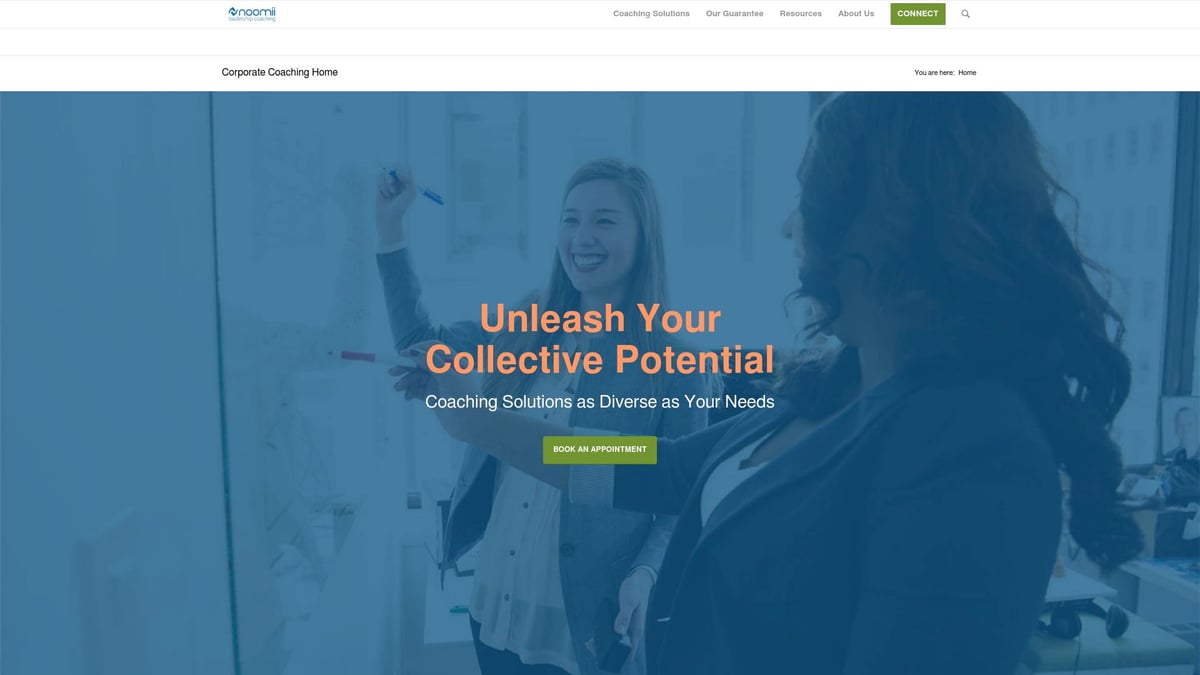Executive and Leadership Coaching Guide for 2025 Success
Did you know organizations investing in executive and leadership coaching are 4.6 times more likely to outperform their peers in 2025? As leadership roles become more complex and the business landscape shifts, this guide is here to help executives, HR leaders, and organizations unlock measurable success.
In this comprehensive resource, you will discover how executive and leadership coaching has evolved, its proven benefits, current trends, tips for choosing the right program, practical strategies to maximize ROI, and a look ahead at what the future holds.
Ready to gain a competitive edge?
The Evolution of Executive and Leadership Coaching

From Traditional Mentoring to Data-Driven Coaching
Executive and leadership coaching has transformed from informal, mentor-driven relationships to highly structured, evidence-based programs. In the past, leaders relied on organic guidance, but today, coaching draws from rigorous methodologies and professional certifications, such as those set by the International Coaching Federation (ICF).
Digital transformation has dramatically expanded access. Remote sessions and scalable platforms make executive and leadership coaching available to leaders worldwide. Firms like Heidrick & Struggles, with over sixty years of experience, have set benchmarks for global leadership coaching excellence, blending deep expertise with new technologies.
Behavioral science now plays a pivotal role. Personalized development plans are crafted using advanced assessments, ensuring each coaching engagement is tailored for maximum impact. The result is a more scientific, outcome-driven approach that supports sustainable growth.
Why Coaching Matters More Than Ever in 2025
The demands on leaders in 2025 are greater than ever. Rapid market shifts, hybrid teams, and geopolitical uncertainty have made executive and leadership coaching a strategic necessity. Leaders must now master agility, emotional intelligence, and strategic foresight to thrive.
Research consistently links coaching to measurable improvements in leadership effectiveness and organizational results. Companies that embed coaching cultures report higher engagement, better retention, and more robust succession pipelines. For example, global organizations that have made coaching a core element of their culture see sustained business performance even in turbulent times.
Talent retention and continuity are also directly influenced by coaching. Organizations that invest in executive and leadership coaching develop resilient leaders who can navigate change and drive success at every level.
Key Milestones and Industry Shifts
The evolution of executive and leadership coaching is marked by several key milestones. The introduction of standardized accreditation, like ICF, raised the bar for coaching professionalism. Digital tools have enabled real-time feedback, making coaching more responsive and accessible.
Specialization is now the norm. Leaders can access coaching tailored for C-suite roles, team dynamics, or emerging leadership needs. Cross-cultural coaching has gained traction as organizations expand globally, requiring nuanced approaches that respect local contexts.
Data-driven diagnostics and benchmarking have set new industry standards. Organizations now use analytics to measure coaching impact and refine strategies. For those seeking deeper insights, the Executive Coaching Insights resource provides valuable articles and trends shaping the field.
The Role of Technology in Modern Coaching
Technology is revolutionizing executive and leadership coaching. Artificial intelligence and analytics power platforms that personalize coaching journeys, matching leaders with the right coaches and interventions. Virtual coaching tools enable hybrid and on-demand models, making coaching more flexible than ever.
Technology-enabled assessments create individualized development plans, providing actionable data for both coaches and leaders. Hybrid delivery models blend face-to-face and digital sessions, supporting high-impact learning in any environment.
With increased digitization comes a need for robust privacy and compliance practices. Organizations must ensure their coaching solutions meet data security standards and protect sensitive information at every stage.
Shaping the Future: Continuous, Enterprise-Wide Development
Looking ahead, executive and leadership coaching will be an ongoing, organization-wide priority. Continuous development ensures leaders stay ahead of change and drive enterprise value. Heidrick & Struggles’ data shows that a commitment to leadership assurance translates directly into long-term business success.
Core Benefits of Executive and Leadership Coaching
Executive and leadership coaching delivers measurable value at every level of an organization. By focusing on individual growth, team dynamics, culture, and future leadership, organizations unlock a powerful engine for success. Let’s break down the core benefits that make executive and leadership coaching essential for thriving in 2025.

Individual Transformation: Enhancing Leader Performance
Executive and leadership coaching transforms leaders from the inside out. Through targeted sessions, leaders gain self-awareness, sharpen decision-making, and build resilience. Research shows that leaders who engage in coaching increase productivity and demonstrate stronger leadership presence.
For example, C-suite executives facing challenging transitions often credit coaching for their smoother adaptation and improved performance. According to Executive Coaching Statistics 2025, 70% of leaders report noticeable improvements in work performance and communication after participating in coaching. These gains ripple throughout the organization, influencing morale and results.
Team Dynamics: Building High-Performing Teams
Executive and leadership coaching is not just for individuals, it elevates entire teams. Team coaching enhances collaboration, trust, and alignment toward shared goals. Heidrick & Struggles’ data reveals that trust-based, aligned teams outperform others by 23.5 percent.
Real-world scenarios illustrate teams moving from dysfunction to high performance after targeted coaching. Leaders learn to foster open dialogue, resolve conflict, and harness diverse strengths. As teams become more cohesive, organizations see faster project delivery and greater innovation.
Organizational Impact: Driving Culture and Business Results
At the organizational level, executive and leadership coaching acts as a catalyst for cultural transformation and business agility. Coaching programs support the creation of adaptive, resilient cultures that respond quickly to change.
The impact is visible in key business metrics:
- Higher employee engagement
- Improved talent retention
- Increased rates of innovation
Scalable coaching programs enable transformation across entire enterprises, ensuring that leadership development reaches every corner of the organization. This broad impact drives sustainable business results.
Leadership Pipeline: Developing Future-Ready Leaders
Building a strong leadership pipeline is a top priority in 2025. Executive and leadership coaching accelerates the development of high-potential talent and supports succession planning. Group coaching creates safe environments for emerging leaders to experiment, innovate, and grow.
Statistics show organizations that invest in coaching strengthen their bench of ready-now leaders, reducing risk and supporting long-term growth. By identifying and nurturing talent early, companies ensure a steady flow of capable leaders who can guide them into the future.
Types of Executive and Leadership Coaching Programs
Understanding the range of executive and leadership coaching programs is essential to selecting the right approach for your organization’s unique needs. Each type offers distinct advantages, methodologies, and outcomes, shaping leaders at every level and driving measurable transformation.

One-on-One Executive Coaching
One-on-one executive and leadership coaching is the gold standard for senior leaders seeking highly personalized development. These engagements focus on tailored strategies to enhance leadership presence, strategic thinking, and emotional intelligence. Coaches work closely with C-suite executives to address decision-making challenges, navigate complex transitions, and build resilience in high-pressure environments.
This format leverages confidential, targeted sessions to unlock self-awareness and strengthen executive impact. Research shows that leaders who invest in individualized coaching report improved productivity and greater confidence managing organizational change. When selecting a provider, look for a coach with deep industry expertise and a proven track record in executive and leadership coaching.
Team Coaching
Team coaching is designed to elevate group performance by addressing dynamics, trust, and alignment within leadership teams. Using benchmarking tools and diagnostics, coaches identify strengths, gaps, and areas for collective growth. Interventions focus on building clarity, accountability, and collaboration, leading to more effective decision-making and higher engagement.
Heidrick & Struggles’ data indicates that aligned, trust-based teams consistently outperform others by 23.5 percent. Real-world examples include leadership teams that, after coaching, accelerated project delivery and improved cross-functional communication. Team-based executive and leadership coaching transforms groups into high-performing units, driving results that ripple across the organization.
Group Coaching for Emerging Leaders
Group coaching is a scalable, cost-effective solution for developing high-potential and emerging leaders. These programs create safe spaces for experimentation, innovation, and peer learning. Participants benefit from sharing real challenges, exploring new leadership strategies, and gaining feedback in a supportive environment.
By focusing on systemic organizational issues, group executive and leadership coaching tackles pain points that affect multiple departments. For example, group sessions can address change management or diversity and inclusion goals. This approach helps organizations build a robust leadership pipeline, ready to navigate future complexity.
Leader as Coach: Empowering People Leaders
The leader as coach model reflects a shift in leadership philosophy, moving from directive management to a coaching mindset. Training leaders to coach their teams and stakeholders empowers them to unlock potential, foster engagement, and drive accountability. Organizations that embed these skills at every level see sustained cultural transformation and improved business outcomes.
Methodologies focus on active listening, powerful questioning, and feedback techniques. By equipping managers with executive and leadership coaching competencies, companies build internal capacity for continuous development. This model ensures that coaching becomes part of the organization’s DNA, not just a one-off intervention.
Coach Accreditation and Certification
Accreditation is critical for ensuring quality and consistency in executive and leadership coaching. Reputable certifications, such as those from the International Coaching Federation (ICF), validate a coach’s expertise, ethical standards, and commitment to ongoing learning. Globally recognized credentials also support organizations seeking to scale coaching across geographies and cultures.
Standardized training programs ensure that coaches deliver evidence-based practices and measurable results. Investing in accredited executive and leadership coaching programs signals a commitment to excellence and future-ready leadership. For more strategies and trends in this space, explore Leadership Coaching Strategies.
Choosing the Right Coaching Solution for Your Organization
Selecting the optimal executive and leadership coaching solution is a critical step for organizations aiming to drive transformation and measurable results. As the coaching landscape evolves, leaders must be strategic in how they evaluate providers, prioritize customization, and ensure alignment with business objectives. Below, we break down the essential elements to consider when making this pivotal decision.
Key Criteria for Selecting a Coaching Provider
When comparing executive and leadership coaching providers, focus on a blend of qualifications, experience, and proven outcomes. Look for coaches with recognized accreditations, such as ICF, and sector-specific expertise relevant to your industry. Assess the provider’s ability to scale coaching initiatives across your organization, as well as their approach to compliance, governance, and cultural alignment.
A data-driven methodology is essential for tracking progress and ensuring accountability. Explore providers with transparent reporting and evidence-based practices. For instance, the Leadership and Executive Coaching Team at Noomii demonstrates the depth of expertise and global reach required for complex coaching engagements.
Customization: Tailoring Coaching to Organizational Needs
Effective executive and leadership coaching must align with your company’s unique strategy and culture. Start by defining clear business objectives and leadership priorities. Leading providers use assessments and diagnostics to identify leadership gaps, strengths, and development areas within teams and individuals.
Customized intervention plans ensure that coaching addresses your organization’s specific challenges, whether it’s navigating digital transformation, improving cross-functional collaboration, or accelerating succession planning. Look for coaching partners that can adapt their programs to varying leadership levels and organizational contexts, driving sustainable change at scale.
Noomii Corporate Leadership Program: Precision Coaching for Measurable Results
Noomii’s Corporate Leadership Program sets a new standard in executive and leadership coaching by combining evidence-based diagnostics with precision coach matching. The program targets core issues such as toxic leadership, low engagement, and underperformance, developing tailored interventions that are measurable and fully compliant with regulatory standards.

Noomii’s global network of certified coaches, coach-match guarantee, and seamless integration with HR processes make it a trusted partner for government agencies and Fortune 500 firms alike. Organizations benefit from actionable insights, transparent ROI metrics, and the assurance that every coaching engagement is aligned with strategic business goals.
Questions to Ask Potential Coaching Partners
Before committing to an executive and leadership coaching provider, ensure you have answers to these critical questions:
- What are the coaches’ qualifications and accreditations?
- How do you measure coaching success and report on ROI?
- What support and follow-up do you offer after the coaching engagement?
- Can you provide case studies and client testimonials relevant to our industry?
- How do you handle confidentiality, data privacy, and feedback?
Prioritizing transparency and open communication will help you select a partner who can deliver lasting impact.
Implementing and Maximizing ROI from Coaching Initiatives
Rolling out executive and leadership coaching programs requires a methodical approach to capture full value. Organizations that excel at implementation drive higher engagement, measurable results, and sustainable growth. Here’s how to set your coaching initiatives up for maximum ROI in 2025.
Setting Clear Goals and KPIs
The foundation of executive and leadership coaching success lies in establishing well-defined goals. Before launching any initiative, clarify what you want to achieve. Is your focus on developing high-potential leaders, improving team collaboration, or driving culture change?
Use leadership assessments and performance benchmarks to set specific KPIs. Common examples include engagement scores, retention rates, and leadership effectiveness ratings.
- Define what “success” looks like for your organization.
- Align coaching objectives with broader business priorities.
- Set measurable, time-bound KPIs for each participant.
By tracking these metrics, organizations ensure that executive and leadership coaching delivers tangible results.
Integrating Coaching with Organizational Strategy
To maximize impact, executive and leadership coaching should be woven into the fabric of your business strategy. This means aligning coaching initiatives with transformation goals, succession planning, and culture shaping efforts.
Heidrick & Struggles emphasizes the value of continuous, enterprise-wide leadership development. Integrate coaching into talent reviews, leadership pipelines, and organizational change programs.
- Map coaching objectives to strategic priorities.
- Include coaching in leadership development frameworks.
- Regularly review progress with senior stakeholders.
When coaching is fully integrated, it supports long-term business outcomes and sustained leadership growth.
Ensuring Engagement and Accountability
Sustained engagement is a critical driver of ROI in executive and leadership coaching. Leaders must be active participants, not passive recipients. Building accountability mechanisms keeps everyone aligned and motivated.
Establish regular check-ins between coaches, leaders, and HR sponsors. Use progress tracking tools and feedback loops to monitor development. Accountability partners or peer support groups can further reinforce commitment.
- Schedule biweekly or monthly coaching reviews.
- Encourage transparent communication about challenges and wins.
- Celebrate milestones and progress to maintain momentum.
By fostering a culture of accountability, organizations amplify the benefits of executive and leadership coaching.
Measuring Impact: Data, Analytics, and Reporting
Demonstrating the value of executive and leadership coaching depends on robust measurement practices. Leverage technology-enabled dashboards and reporting tools to track outcomes at both individual and organizational levels.
Capture baseline data before coaching starts, then monitor progress against KPIs. Use analytics to identify trends, adjust strategies, and showcase ROI to stakeholders. For more on this, see the ROI of Executive Coaching, which highlights tangible gains in productivity and engagement.
- Compare pre- and post-coaching metrics.
- Share impact reports with executive sponsors.
- Use data to inform ongoing investment decisions.
Accurate measurement builds credibility for executive and leadership coaching initiatives.
Overcoming Common Implementation Challenges
Many organizations face obstacles when implementing executive and leadership coaching. Resistance to change, unclear objectives, or resource constraints can stall progress.
Solve these issues by securing leadership buy-in early and communicating the benefits clearly. Use phased rollouts for large-scale programs, allowing time to adapt and refine processes.
- Identify and address sources of resistance.
- Provide clear guidelines and expectations.
- Share success stories to build momentum.
With the right approach, organizations can overcome hurdles and realize the full potential of executive and leadership coaching.
Leveraging External Resources and Partnerships
External expertise often accelerates the success of executive and leadership coaching programs. Collaborate with reputable providers, industry networks, and coaching platforms for guidance and support.
Strategic partnerships ensure your organization remains at the forefront of leadership development trends and unlocks lasting value from every coaching investment.
2025 Trends and the Future of Executive and Leadership Coaching
The landscape of executive and leadership coaching is undergoing rapid change in 2025. Leaders and organizations are adopting new methods and technologies to stay ahead in a complex, fast-moving world. Let us explore the key trends shaping the future of executive and leadership coaching and how you can leverage these insights for sustainable success.
The Rise of Hybrid and On-Demand Coaching Models
Hybrid and on-demand models are transforming the way executive and leadership coaching is delivered. Organizations now blend in-person sessions with virtual coaching, enabling greater flexibility and accessibility.
These models allow leaders to access support when they need it most, whether through scheduled sessions or instant, on-demand guidance. Companies benefit from scalable solutions that reach leaders at every level, no matter their location. As a result, more businesses are embedding executive and leadership coaching into daily workflows, driving consistent growth and development.
AI and Advanced Analytics in Coaching
Artificial intelligence is revolutionizing executive and leadership coaching by offering personalized learning journeys and real-time feedback. Platforms now use advanced analytics to assess leadership strengths, predict development needs, and measure progress.
This technology enables coaches to tailor interventions with precision, ensuring measurable outcomes. According to AI in Executive Coaching, generative AI is being used to enhance session quality, track behavioral changes, and provide actionable insights for both individuals and organizations. With AI, the future of executive and leadership coaching is data-driven, efficient, and deeply personalized.
Diversity, Equity, and Inclusion (DEI) in Coaching
Diversity, equity, and inclusion have become central to executive and leadership coaching in 2025. Programs are evolving to address the unique challenges faced by underrepresented groups and to promote inclusive leadership at all levels.
Coaching providers now prioritize cultural competence when matching coaches with clients. They design interventions that foster belonging and equity within teams. Organizations that invest in DEI-focused executive and leadership coaching see measurable improvements in engagement, innovation, and retention, creating a more dynamic workplace.
Coaching for Resilience and Wellbeing
The focus on resilience and holistic wellbeing is stronger than ever in executive and leadership coaching. Leaders face mounting pressures, making mental health and stress management top priorities.
Coaching now incorporates strategies for emotional intelligence, self-care, and work-life balance. These elements help leaders navigate uncertainty and prevent burnout. Studies reveal that organizations investing in resilience coaching report higher productivity and stronger leadership effectiveness, reinforcing the value of this trend.
Building Coaching Cultures: Enterprise-Wide Adoption
Organizations are moving from isolated coaching programs to building enterprise-wide coaching cultures. Executive and leadership coaching is no longer reserved for the C-suite—it is integrated into every layer of the business.
Leaders are trained to coach their teams, creating a ripple effect of continuous development. This approach accelerates transformation and embeds coaching into the company’s DNA. Businesses that embrace a coaching culture experience sustained performance gains, higher engagement, and stronger talent pipelines.
The Globalization of Executive Coaching
Global expansion is redefining executive and leadership coaching. Companies operate across borders and cultures, requiring coaches who understand diverse markets and can adapt to local nuances.
Coaching providers now offer multilingual programs and culturally adaptive approaches. This ensures leaders everywhere benefit from the same high standards of development.




Leave a Reply
Want to join the discussion?Feel free to contribute!